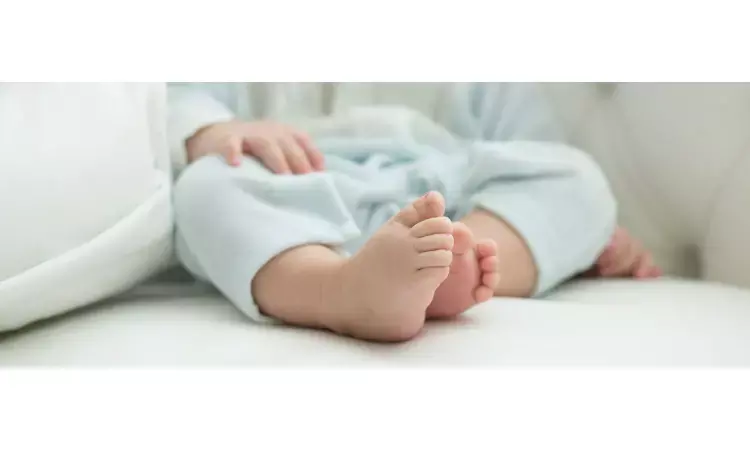- Home
- Medical news & Guidelines
- Anesthesiology
- Cardiology and CTVS
- Critical Care
- Dentistry
- Dermatology
- Diabetes and Endocrinology
- ENT
- Gastroenterology
- Medicine
- Nephrology
- Neurology
- Obstretics-Gynaecology
- Oncology
- Ophthalmology
- Orthopaedics
- Pediatrics-Neonatology
- Psychiatry
- Pulmonology
- Radiology
- Surgery
- Urology
- Laboratory Medicine
- Diet
- Nursing
- Paramedical
- Physiotherapy
- Health news
- Fact Check
- Bone Health Fact Check
- Brain Health Fact Check
- Cancer Related Fact Check
- Child Care Fact Check
- Dental and oral health fact check
- Diabetes and metabolic health fact check
- Diet and Nutrition Fact Check
- Eye and ENT Care Fact Check
- Fitness fact check
- Gut health fact check
- Heart health fact check
- Kidney health fact check
- Medical education fact check
- Men's health fact check
- Respiratory fact check
- Skin and hair care fact check
- Vaccine and Immunization fact check
- Women's health fact check
- AYUSH
- State News
- Andaman and Nicobar Islands
- Andhra Pradesh
- Arunachal Pradesh
- Assam
- Bihar
- Chandigarh
- Chattisgarh
- Dadra and Nagar Haveli
- Daman and Diu
- Delhi
- Goa
- Gujarat
- Haryana
- Himachal Pradesh
- Jammu & Kashmir
- Jharkhand
- Karnataka
- Kerala
- Ladakh
- Lakshadweep
- Madhya Pradesh
- Maharashtra
- Manipur
- Meghalaya
- Mizoram
- Nagaland
- Odisha
- Puducherry
- Punjab
- Rajasthan
- Sikkim
- Tamil Nadu
- Telangana
- Tripura
- Uttar Pradesh
- Uttrakhand
- West Bengal
- Medical Education
- Industry
Insidious osteomyelitis in kids under 2 years may turn out to be BCG-osteomyelitis

Yuko Tsujioka et al conducted a retrospective study to report the clinical and imaging characteristics of BCG-osteomyelitis, and compare them with those of pyogenic osteomyelitis at the following japan institutes - Tokyo Metropolitan Children's Medical Center , National Center for Child Health and Development and St. Luke's International Hospital.
Recent reports have shown that the incidence has increased worldwide; thus, a number of affected individuals may not have been precisely diagnosed because of its rarity and lack of attention from healthcare professionals; yet, the prompt introduction of antituberculous therapy could prevent the late morbidities, such as leg length discrepancy and joint deformity. Hence, the early diagnosis and timely medical intervention are desirable, but the diagnosis of BCG-osteomyelitis rests on a physician's suspicion, because the routine histological examination alone may not lead to an unequivocal diagnosis.
Clinical and imaging findings were retrospectively evaluated in 14 children with BCG osteomyelitis, including 3 with Mendelian susceptibility to mycobacterial diseases (MSMD), and in 40 children with pyogenic osteomyelitis, using Fisher exact and Mann-Whitney U tests.
The observations in the study were:
• BCG-osteomyelitis was an indolent inflammatory disease of young children (mean age 15.5 months).
• Immunocompetent patients came to medical attention over months after vaccination, while patients with MSMD much earlier (the average time lapse: 13.7 vs. 5.0 months). The former manifested with a slowly progressive, painless mass with only mildly increased acute-phase reactants, while the latter started with lymphadenitis with significant inflammatory reactions and later developed osteomyelitis. These clinical scenarios contrasted with acute febrile illness in pyogenic osteomyelitis.
• The imaging findings were identical in both immunocompetent and MSMD groups; however, the former showed monoostotic involvement, while the latter polyostotic affiction.
• The typical imaging finding of BCG-osteomyelitis comprises a large intraosseous abscess with modest reactive edema commonly associated with transphyseal extension from the metaphysis to the epiphysis, contrasting with the manifestation of pyogenic osteomyelitis; size of abscess (p=0.028), pattern of abscess extension (p<0.001), and extent of surrounding edema (p<0.001).
This retrospective study has a few drawbacks, including a limited number of cases, institution-related selection bias, laboratory data and imaging obtained at various stages of the disease, and inconsistent MRI imaging sequences. Further studies on multi-institutional and/or large international cohorts are desirable to understand the full spectrum of the clinical and imaging features in BCG osteomyelitis.
The authors concluded that - BCG-osteomyelitis should be suspected in children under 2 years of age with insidious osteomyelitis, accompanied with characteristic imaging findings. Polyostotic BCG osteomyelitis is highly suggestive of MSMD. Awareness of the distinctive features of BCG-osteomyelitis enables the early diagnosis and timely therapeutic intervention.
Further reading:
BCG osteomyelitis: tips for diagnosis
Yuko Tsujioka, Taiki Nozaki, Gen Nishimura, Osamu Miyazaki, Masahiro Jinzaki, Tatsuo Kono
Skeletal Radiology (2022) 51:1571–1584
https://doi.org/10.1007/s00256-021-03966-7
MBBS, Dip. Ortho, DNB ortho, MNAMS
Dr Supreeth D R (MBBS, Dip. Ortho, DNB ortho, MNAMS) is a practicing orthopedician with interest in medical research and publishing articles. He completed MBBS from mysore medical college, dip ortho from Trivandrum medical college and sec. DNB from Manipal Hospital, Bengaluru. He has expirence of 7years in the field of orthopedics. He has presented scientific papers & posters in various state, national and international conferences. His interest in writing articles lead the way to join medical dialogues. He can be contacted at editorial@medicaldialogues.in.
Dr Kamal Kant Kohli-MBBS, DTCD- a chest specialist with more than 30 years of practice and a flair for writing clinical articles, Dr Kamal Kant Kohli joined Medical Dialogues as a Chief Editor of Medical News. Besides writing articles, as an editor, he proofreads and verifies all the medical content published on Medical Dialogues including those coming from journals, studies,medical conferences,guidelines etc. Email: drkohli@medicaldialogues.in. Contact no. 011-43720751


